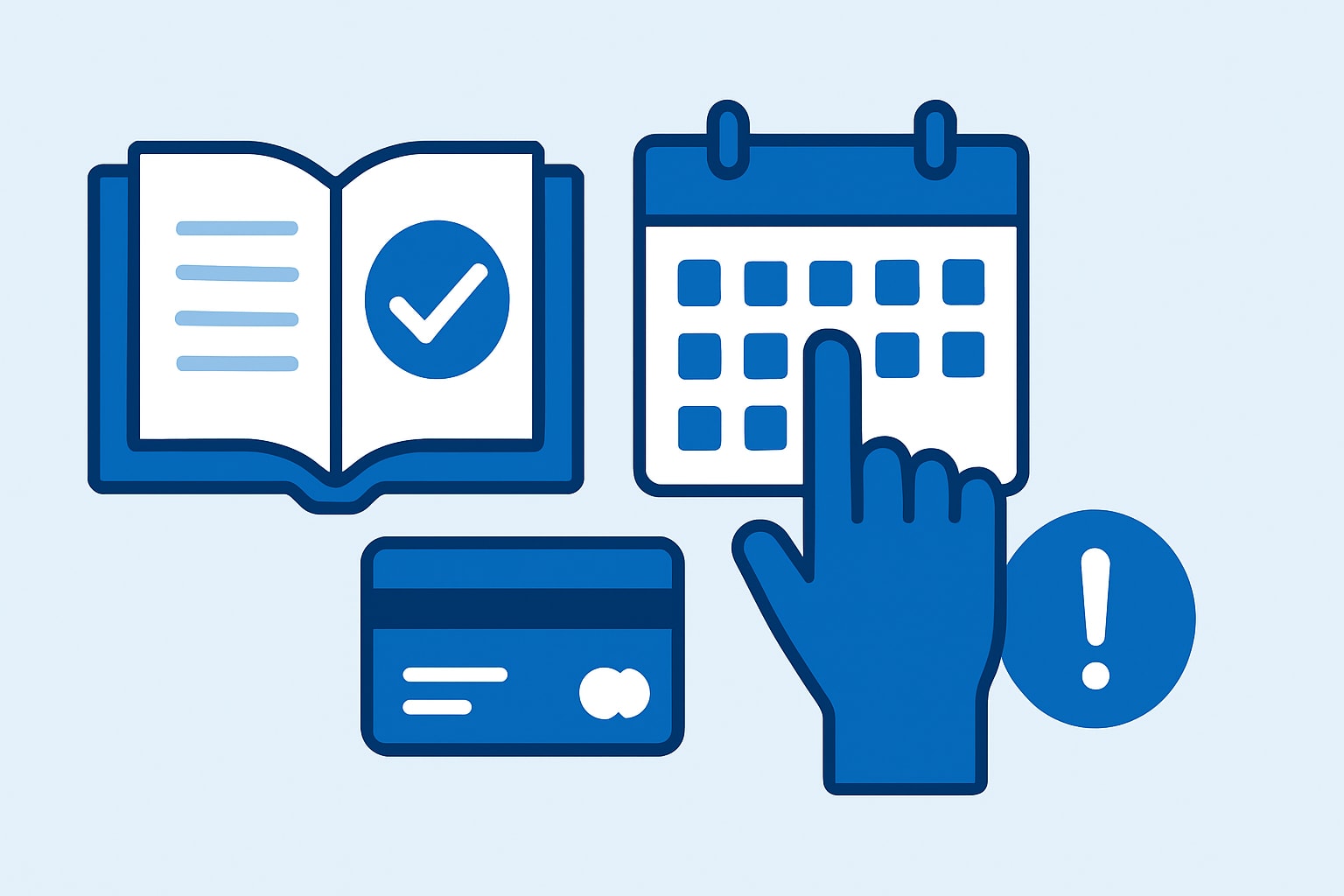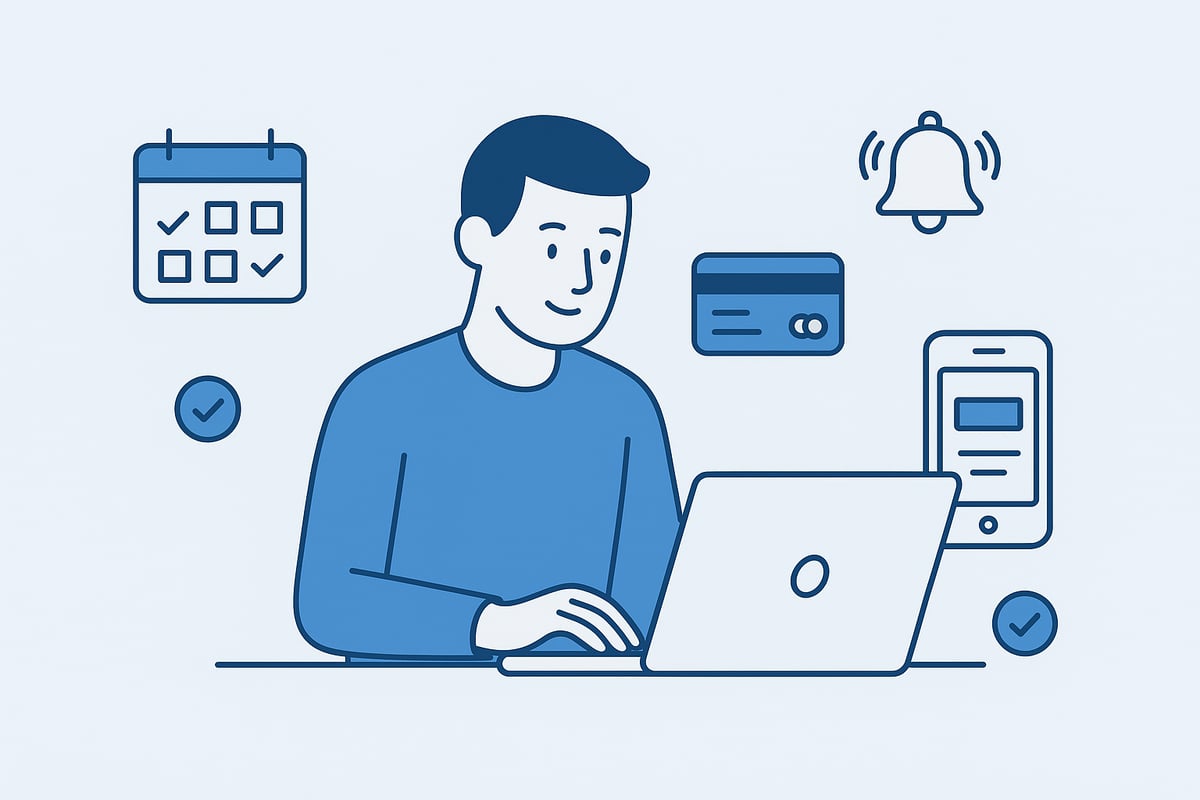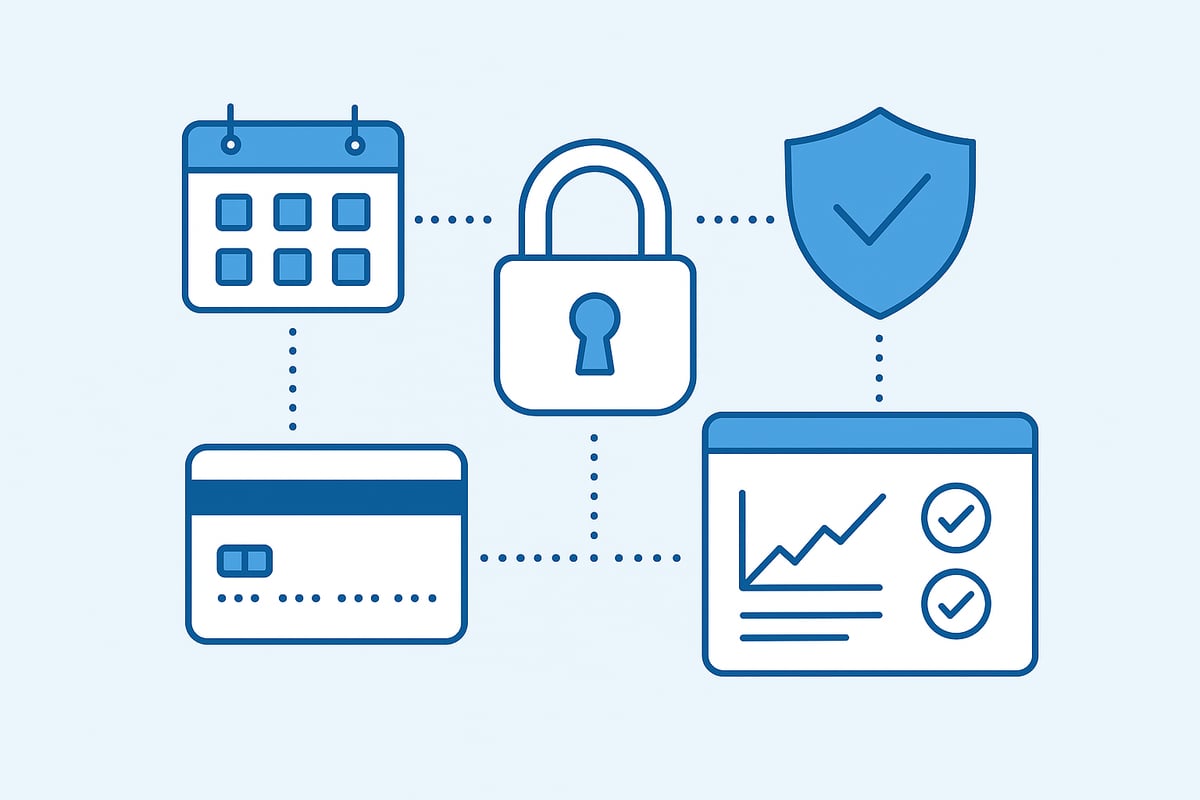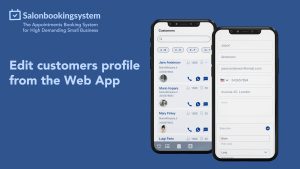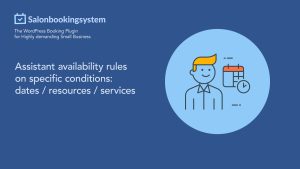Are you frustrated by slow, error-prone booking and payment processes that drain your time and energy? Manual scheduling and payment mistakes can lead to lost revenue and unhappy customers.
This guide is designed to help you transform your booking and payment workflow into a seamless experience for both your team and your clients. By embracing integrated solutions, you can save time, reduce no-shows, and improve customer satisfaction.
We will walk you through the latest systems, setup steps, essential features, security tips, and best practices for 2025. Follow along to discover how to streamline your entire booking and payment process and set your business up for success.
The Evolution of Booking and Payment Systems
The world of booking and payment has changed dramatically in recent years. Businesses are moving away from manual processes and fragmented tools. Today, a single booking and payment platform can transform daily operations, drive efficiency, and meet rising customer expectations.
The Rise of Integrated Solutions
Businesses across industries are embracing unified booking and payment solutions. The shift is clear: manual scheduling and multiple payment tools are being replaced by seamless platforms. According to recent Appointment Scheduling Software Market Growth data, the appointment scheduling software market was valued at $14.33 billion in 2024 and is projected to reach $42.15 billion by 2034.
This rapid growth is driven by consumer demand for frictionless experiences. Salons, gyms, and professional services now use all-in-one tools that combine booking and payment, reducing paperwork and enabling real-time updates. These platforms also deliver valuable business insights, helping owners make data-driven decisions.
Integrated solutions mean less time spent on admin tasks. For customers, the ability to book and pay in one place leads to higher satisfaction and loyalty.
Key Drivers of Change in 2025
Several trends are accelerating the evolution of booking and payment systems. Remote and mobile bookings are on the rise, as customers expect instant confirmations and cashless options. Digital wallets and contactless payments are becoming standard, offering speed and convenience.
Regulatory changes are shaping how businesses handle transactions and protect data. Security standards, such as PCI DSS, are now essential. Trust is a top priority: customers are more likely to choose providers who offer transparent, reliable booking and payment experiences.
Brand perception is also shaped by the ease of use and reliability of these systems. Businesses that adapt to these drivers will stay ahead in a competitive landscape.
Challenges of Legacy Systems
Despite these advances, many businesses still rely on outdated booking and payment methods. Legacy systems often lead to double bookings, missed appointments, and inaccurate records. Disconnected tools mean time wasted on manual invoicing and chasing payments.
Customers become frustrated with multi-step, non-intuitive processes. For example, a business using spreadsheets, calendar apps, and separate payment processors can struggle to provide a smooth booking and payment journey.
These challenges highlight the need for modernization. Upgrading to integrated booking and payment platforms helps reduce errors, improve efficiency, and deliver a more professional customer experience.
Core Features of a Modern Booking and Payment System
Modern booking and payment systems have transformed how businesses handle appointments and transactions. By adopting unified solutions, companies can streamline operations, reduce errors, and deliver a seamless customer experience. Let’s break down the essential features that define a robust booking and payment platform in 2025.
Unified Booking and Payment Workflow
A key advantage of a modern booking and payment system is a unified workflow. Customers can book services and complete payments in a single, intuitive interface. This integration eliminates the need for manual confirmation or chasing payments after appointments.
For example, when a customer reserves a fitness class, the system updates availability in real time and provides instant confirmation. Automated messages, via email or SMS, keep everyone informed. This approach ensures that booking and payment processes are efficient, accurate, and user-friendly.
Payment Flexibility and Integration
Today’s booking and payment platforms must support a wide range of payment methods. Customers expect to pay using credit cards, digital wallets, or even in-person options like Tap to Pay. Integration with trusted gateways such as Stripe, Square, PayPal, and LawPay is essential.
Businesses can configure deposits, full, or partial payments based on service type or customer preference. For in-person transactions, systems often support card readers and terminal integration, making every booking and payment scenario seamless and secure.
Automation and Admin Reduction
Automation is a cornerstone of efficient booking and payment management. Modern systems send automated reminders to reduce no-shows, handle refunds, and allow for easy rescheduling when plans change.
Built-in synchronization with accounting tools like QuickBooks streamlines financial tracking. Detailed transaction histories and reporting dashboards provide instant access to data, reducing the manual workload and helping teams focus on delivering excellent service.
Brand Experience and Customization
A consistent brand experience is crucial, even in booking and payment flows. Businesses can customize booking pages with their logos, colors, and unique fields to reflect their identity.
Customizable booking and payment flows allow for flexible pricing and staff assignments. Features like discount codes, promotional offers, and loyalty programs help attract and retain customers, while reinforcing brand value throughout the booking and payment journey.
Scalability and Multi-Location Support
As businesses grow, their booking and payment needs become more complex. Leading systems can manage multiple branches or locations from a single dashboard. This is especially important for salons, clinics, or franchises with rotating staff and resources.
Staff scheduling, resource allocation, and real-time availability updates ensure smooth operations across all sites. Businesses can easily expand their booking and payment capabilities as they open new locations or add services.
Data and Analytics Capabilities
Access to real-time data is vital for informed decision making. Booking and payment platforms provide metrics like weekly bookings, revenue, and peak hours. These insights inform staffing, marketing, and inventory decisions.
Exportable reports simplify business planning and help identify trends or bottlenecks. With robust analytics, owners can optimize the booking and payment process for continued growth and efficiency.
Salon Booking System: Streamlined Solutions for Salons and Small Businesses
Salon Booking System is a comprehensive WordPress-based solution designed for salons, spas, and service businesses. It offers 24/7 online booking, supports more than 20 payment gateways, and automates reminders and staff assignments.
The platform stands out by reducing manual work and minimizing no-shows. Features like customer loyalty tools and resource allocation improve satisfaction and streamline booking and payment for thousands of businesses worldwide. For a detailed overview of its unified booking and payment features, explore the Salon Booking System features overview page.
Step-by-Step Guide: Setting Up a Streamlined Booking and Payment Process
Setting up a streamlined booking and payment process is essential for modern businesses aiming to improve efficiency and customer experience. By following these steps, you can create a seamless system that minimizes errors, reduces manual work, and increases revenue.
Step 1: Define Your Booking and Payment Requirements
Begin by identifying your business’s unique booking and payment needs. Consider the types of appointments you offer, such as one-on-one sessions, group classes, or recurring services. Determine whether you require options for deposits, full payments, or partial payments at the time of booking.
List the payment methods your customers prefer, such as credit cards, digital wallets, or in-person payments. Clarifying these requirements ensures your chosen system will handle every aspect of your booking and payment workflow.
Step 2: Choose the Right Booking and Payment Platform
Select a platform that matches your business size, services, and growth plans. Prioritize ease of use, integration with other tools, and scalability. Compare features like online booking, payment gateway options, staff management, and mobile compatibility.
For a deeper dive into essential appointment solutions, check out this Appointment software for small business guide. Evaluate platforms such as Stripe, Setmore, and industry-specific tools to ensure they support the booking and payment options your customers expect.
Step 3: Integrate Payment Gateways and Configure Payment Flows
Connect your preferred payment processors, such as Stripe, Square, PayPal, or LawPay, to securely accept payments online, in person, or via mobile devices. Set up your system to handle deposits, full or partial payments, and refunds according to your business policies.
Establish clear cancellation and refund rules within your booking and payment platform. For example, platforms like Setmore allow instant online payments and can integrate with card readers for seamless in-person transactions.
Step 4: Customize Your Booking Experience
Personalize your booking and payment pages to reflect your brand. Add your logo, select colors, and tailor the booking flow to include any custom fields necessary for your business.
Enable automated reminders through SMS, email, or WhatsApp to reduce no-shows. Consider offering promotions, discounts, or loyalty programs to encourage repeat bookings and enhance your booking and payment process.
Step 5: Sync with Calendars and Accounting Tools
Integrate your booking and payment system with tools like Google Calendar, Outlook, or QuickBooks. This ensures appointments automatically appear in your calendar and payment records sync with your accounting software.
Automate payment data flow to simplify reconciliation and reporting. For example, syncing Setmore with QuickBooks allows you to manage finances and bookings from a single dashboard, reducing administrative overhead.
Step 6: Test and Launch Your Booking and Payment System
Before going live, conduct thorough testing of your booking and payment setup. Perform test bookings, process payments, and simulate refunds to verify smooth operation.
Gather feedback from team members and select customers to identify any usability issues. Once you are confident in the system’s reliability, launch it publicly and monitor initial transactions for any problems.
Step 7: Monitor, Optimize, and Scale
After launch, regularly monitor your booking and payment analytics. Track metrics such as booking rates, payment completion, and customer satisfaction.
Use this data to optimize workflows, adjust policies, and introduce new promotions. As your business grows, expand your booking and payment system to support additional locations, staff, or services, ensuring continued efficiency and customer satisfaction.
Security and Compliance: Protecting Data and Payments
Protecting your customers’ sensitive information is critical in any booking and payment system. Modern businesses must prioritize security to maintain trust, prevent data breaches, and comply with evolving regulations. Below, we break down the key components of a secure booking and payment workflow.
PCI-Compliant Payment Processing
Every booking and payment transaction must be processed through a payment gateway that meets Payment Card Industry Data Security Standard (PCI DSS) requirements. Using a PCI DSS Compliance Overview certified provider, such as Stripe, Square, or PayPal, ensures cardholder data is protected and reduces your liability.
PCI-compliant gateways encrypt card details, monitor for suspicious activity, and regularly update their security protocols. This not only protects your business but also builds customer confidence in your booking and payment platform.
Encryption and Data Protection
End-to-end encryption is essential for safeguarding personal and payment data during each stage of the booking and payment process. Ensure your system uses secure protocols like HTTPS and SSL to transmit information.
Additionally, sensitive data should be stored using strong encryption methods. Limiting data retention and performing regular audits further shield your booking and payment records from unauthorized access.
Authentication and Access Controls
Robust authentication measures protect your booking and payment system from internal and external threats. Implement two-factor authentication (2FA) for administrators and staff to prevent unauthorized logins.
Role-based permissions are vital. Restrict access to sensitive booking and payment information based on job roles. Only authorized personnel should view or manage customer payment details, reducing the risk of internal breaches.
Ongoing Security Monitoring and Updates
Continuous monitoring of your booking and payment infrastructure helps detect and respond to threats in real time. Use tools that alert you to unusual activity, failed login attempts, or unrecognized devices.
Regularly update your software, plugins, and integrations. Prompt patching of vulnerabilities ensures hackers cannot exploit outdated booking and payment components, keeping your operations secure.
Customer Trust and Transparency
Building customer trust begins with visible security measures. Display security badges, SSL certificates, and privacy notices prominently on your booking and payment pages.
Be transparent about your data handling, refund, and cancellation policies. Clear communication reassures customers that their booking and payment information is protected and handled responsibly.
Compliance with Local and Global Regulations
Your booking and payment system must comply with relevant data privacy laws, such as GDPR in Europe and CCPA in California. Maintain detailed records and audit trails for all transactions and data access events.
Understand your regulatory requirements and ensure your providers also comply. This minimizes legal risks and demonstrates your commitment to secure booking and payment practices.
Example: Stripe’s Security Practices
Stripe exemplifies strong security in the booking and payment industry. Their platform is PCI-compliant, uses advanced encryption, and supports two-factor authentication for all users.
Stripe also provides real-time monitoring and instant alerts for suspicious transactions. These practices make Stripe a trusted choice for secure booking and payment processing.
Industry Applications and Best Practices for 2025
Today’s businesses across industries are transforming their operations with modern booking and payment solutions. Whether you run a salon, gym, law firm, or travel agency, the right system can elevate efficiency, minimize errors, and enhance customer experience.
Salons, Spas, and Wellness Providers
For salons and spas, booking and payment systems are essential for managing busy schedules and reducing administrative tasks. With these tools, clients can book appointments and pay online or in person, which significantly decreases no-show rates.
Features like automated reminders, staff scheduling, and resource management are crucial for smooth daily operations. For a detailed look at industry solutions, see this service company scheduling software guide, which covers the latest platforms and integration strategies.
Fitness, Gyms, and Personal Training
Fitness centers and gyms rely on booking and payment platforms to streamline class reservations, recurring memberships, and package deals. These systems enable clients to schedule sessions and pay instantly, either online or at the front desk.
Integration with attendance tracking and access control ensures only paying members access facilities. Automated renewals, reminders, and mobile apps allow trainers and staff to focus more on service delivery and less on paperwork.
Professional Services (Legal, Medical, Consulting)
Professional service providers manage confidential data and complex billing requirements. Booking and payment software helps synchronize appointments with staff calendars, automate invoicing, and collect payments securely.
Legal and medical practices benefit from encrypted payment processing, compliance features, and custom scheduling for consultations. These tools also reduce time spent on administrative follow-up, helping professionals focus on client care.
Education, Events, and Workshops
Educational institutions, event planners, and workshop organizers use booking and payment solutions for group registrations, ticket sales, and installment payments. Clients can book their spots, receive confirmations, and pay with their preferred method in a single workflow.
Automated communications notify attendees of schedule changes or reminders. This approach saves organizers time and provides a seamless experience for participants, ensuring higher attendance and satisfaction.
Hospitality and Travel
In hospitality and travel, real-time booking and payment systems are vital for managing room or service availability, dynamic pricing, and instant payment confirmation. Hotels and agencies can handle multiple locations, update seasonal offerings, and process payments globally.
Centralized dashboards allow managers to oversee staff assignments and customer bookings in one place. This leads to faster check-ins, fewer errors, and improved guest satisfaction.
Key Best Practices for Streamlining Processes
To optimize your booking and payment workflow, centralize all reservations and transactions within one platform. Automate confirmations, reminders, and follow-ups to minimize manual work. Regularly review analytics to spot bottlenecks and growth opportunities.
For secure transactions, follow secure online payment best practices, including PCI compliance and data encryption. Train staff on new systems and encourage feedback to ensure a smooth transition.
Looking ahead, watch for advances in AI-powered scheduling, digital wallet adoption, and personalized booking and payment flows. Staying proactive will keep your business competitive and responsive to client needs.
Maximizing Customer Experience and Business Growth
Delivering an exceptional customer journey is essential for any business aiming to thrive in 2025. A streamlined booking and payment process is no longer just an advantage, it is an expectation. By focusing on convenience, personalization, and continuous improvement, you can set your business apart and drive sustainable growth.
Creating a Seamless Customer Journey
Start by ensuring your booking and payment system is accessible 24/7 from any device. Customers expect instant confirmations and a transparent pricing structure at every step. Make the process intuitive, with minimal clicks from selection to payment, so clients feel confident and informed.
Key elements for a seamless experience:
- Mobile-friendly booking and payment interfaces
- Real-time availability and instant booking confirmations
- Clear, upfront pricing with no hidden fees
When customers enjoy a smooth journey, satisfaction and trust naturally increase.
Reducing No-Shows and Cancellations
No-shows can disrupt schedules and impact revenue. Mitigate this risk by using automated reminders through SMS or email. Offer easy rescheduling tools so customers can make changes without hassle.
Implementing deposits or prepayments can further reduce last-minute cancellations. With a modern booking and payment platform, these features are simple to configure and manage.
- Schedule automated appointment reminders
- Enable self-service rescheduling options
- Set up deposits to secure bookings
Building Loyalty and Repeat Business
Customer retention is crucial for long-term business success. Use loyalty programs, personalized discounts, and special offers to encourage repeat visits. Collect and showcase customer reviews to build social proof.
For those seeking cost-effective solutions, exploring salon software free options with booking and payment features can help small businesses offer professional experiences without high upfront costs.
- Launch loyalty or referral programs
- Send personalized follow-up offers
- Display testimonials to build credibility
Leveraging Analytics for Growth
Data-driven insights help you understand customer behavior and booking and payment trends. Monitor metrics like peak booking times, revenue per service, and customer retention rates.
Regularly reviewing analytics allows you to adapt services, refine marketing strategies, and identify new opportunities for growth.
- Track booking and payment conversion rates
- Analyze no-show patterns and adjust reminders
- Use insights to optimize staffing and promotions
Expanding Service Offerings and Locations
As your business grows, your booking and payment platform should scale with you. Add new services or open additional locations, managing everything from a single dashboard.
Multi-location support and flexible service menus make expansion smooth and efficient.
Integrating with Marketing and Communication Tools
Connect your booking and payment system to email, SMS, and social media platforms. Automate follow-ups, feedback requests, and targeted promotions to maintain engagement and encourage repeat business.
Staying Competitive in 2025 and Beyond
Continuously explore new technologies and secure payment solutions to keep your booking and payment process ahead of the curve. Prioritize customer convenience and security to ensure ongoing success.
Now that you’ve explored how a modern booking and payment system can improve efficiency, reduce errors, and deliver a seamless experience for both you and your clients, why not see the difference for yourself With tools designed specifically for salons and small businesses, you can simplify appointment management, accept online payments, and automate reminders—all in one place If you’re ready to streamline your workflow in 2025 and take customer satisfaction to the next level, I encourage you to Start for free and discover just how easy managing bookings and payments can be

